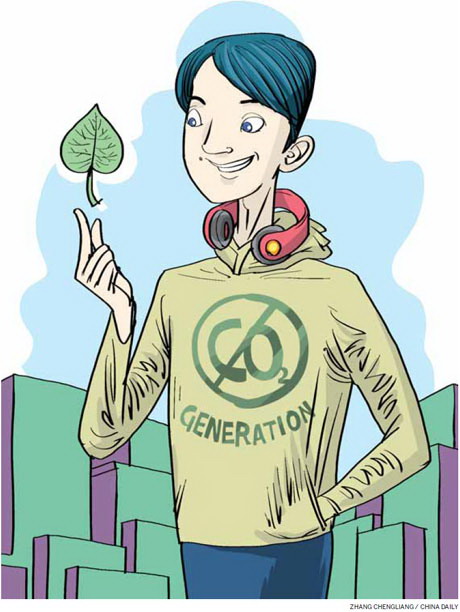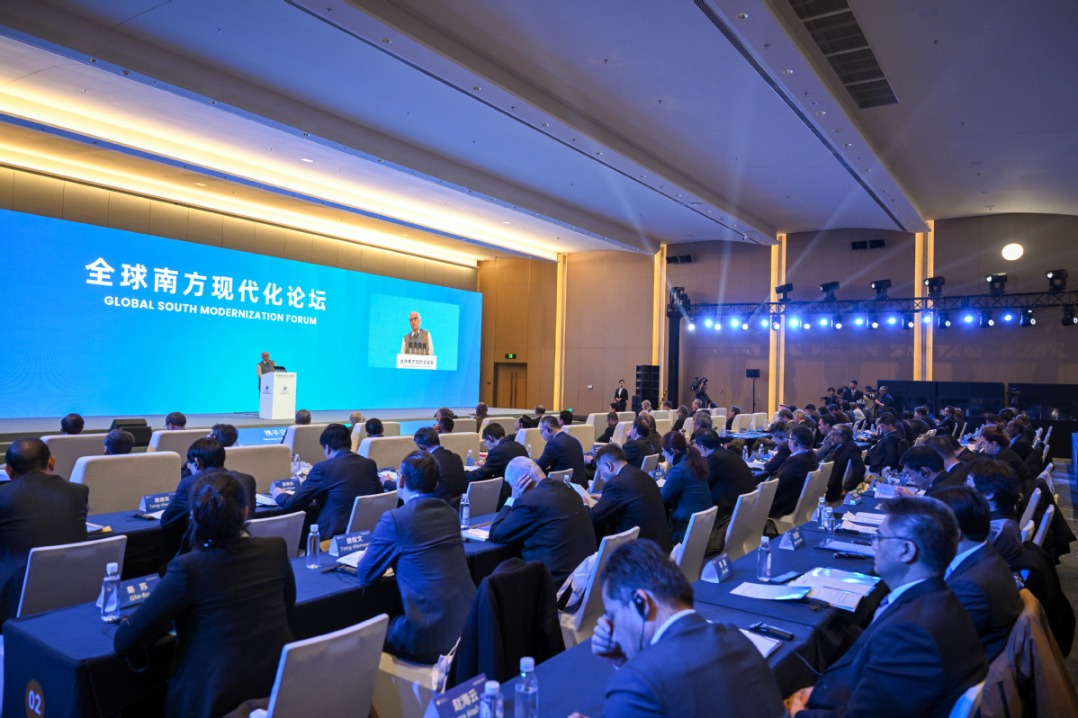A new carbon order emerges

Chinese consumers could become the driving force behind environment-friendly products
 |
Agrowing global presence, a rising political power, a burgeoning consumer market are all terms associated with China. But, "a voice for sustainability"? This doesn't tally with most people's perceptions of the country, which emits more CO2 than the US and Canada put together.
And so it was truly surprising when an online research project that we recently conducted with TNS found that young urban-based people in China are more concerned about brands reducing their impact on the environment than their counterparts in the US and the UK. It seems that when it comes to emerging markets, attitudes and actions on climate change can be counter-intuitive.
The news that South Korea, the world's eighth largest carbon emitter, is to launch a cap-and-trade carbon reduction scheme took many people by surprise. As did the reports from earlier this year of China's early stage pilots to investigate carbon emissions trading schemes. It appears that global industry leaders and governments are watching carefully as these increasingly powerful markets make plans for a more sustainable approach to business.
Could it be that a new order in global perceptions of climate change and carbon is emerging? We explored attitudes toward climate change and the environment of 18-25-year-olds in six countries around the world. These discriminating and influential young consumers told a story that will resonate with leading brands who increasingly measure their environmental footprint.
Many were willing to take personal responsibility for their own carbon footprint, with over a quarter (28 percent) of young adults globally stating that they are trying to reduce their carbon footprint but feel they could do more.
When asked about their views of brands' commitments to carbon reduction, 83 percent of young people questioned in China said they would be more loyal to a brand if they could see it was reducing its carbon footprint, compared to 73 percent in South Korea, 57 percent in the US and 55 percent in the UK.
This pattern repeated itself throughout with the call for brands to reduce their carbon footprint strongest in China - 88 percent of 18-25-year-olds surveyed in China wanted their favorite brands to help reduce their carbon footprint, compared to 66 percent in the US and UK. Nearly two in three (60 percent) of young Chinese adults who participated in the research say they would stop buying a product if its manufacturer refused to commit to measuring and reducing its carbon footprint, followed by 57 percent in Brazil, 53 percent in South Korea and 35 percent and 36 percent in the US and UK respectively.
We know that actions speak louder than words and that these findings only reflect attitudes as opposed to what is happening today in these countries. However, there seems to be a broader trend for emerging markets to lead the call for environmental action - 81 percent of young adults questioned in Brazil, higher than any other nation, 80 percent in China and 76 percent in South Korea said companies should be obliged to provide proof of their policy to reduce their carbon footprint.
So what does all this mean for established global brands and brands from emerging markets? Our experience of working on carbon reduction strategies with global companies suggests that they have traditionally looked to insights from their home markets, developed an approach and then assumed that this would work in new markets as well. If consumers in new markets are more engaged in sustainability, global businesses may need to adapt to a new reality.
This potential shift in focus for sustainable products and services is doubly important given the spending power of emerging markets such as China and South Korea. Economic growth in East and South Asia is predicted to run at close to 7 percent through 2012 while wages rose by 8 percent across Asia in 2009, mostly driven by China. If we also factor in population growth in many Asian societies - it was estimated that there were 745 million young adults in Asia in 2010 - we see how enticing these markets are for many brands.
Added to this, our research found that 33 percent of young adults questioned would be prepared to buy a more expensive product if it had a lower carbon footprint. The signs all point toward the economic potential for brands if they develop a sustainability strategy communicating with young consumers, particularly those in emerging markets where interest is highest. The question is which organizations will recognize and react fastest to this competitive drive to produce more sustainable products?
Coca-Cola is an established global company that has embraced sustainable thinking in its business strategy. Back in 2007, it calculated the carbon footprint of some of its most popular products in the UK. It then used the work to inform its corporate responsibility and sustainability strategy and decision making related to packaging design, new product development and recycling. And recently, we completed a study with Coca-Cola testing the concept of a Personal Carbon Allowance that might help consumers make informed environmental choices.
Dyson is another global brand weaving in carbon reduction to its product design and development. Its engineers develop machines that perform better but use less energy, in manufacture and in use, and materials. Dyson's approach shows how carbon can be designed out of the product right from the beginning, enabling the Dyson Airblade, for example, to be positioned in the market as the first hand dryer to be awarded the Carbon Reduction Label.
Asian brands are also responding fast, building their environmental credentials for both domestic and export markets. In 2009, Samsung Electronics set challenging greenhouse gas reduction targets throughout its Green Management initiative, "Planet First". It is now on track to reduce its greenhouse gas emissions intensity by 50 percent across its manufacturing facilities by 2013.
If, as the research suggests, consumers in emerging markets set the pace for the development of sustainable products and services, brands heavily exposed to these markets will find themselves with a competitive advantage. As resources become scarce and more expensive, sustainable design and manufacturing will become the norm.
So where does this leave Western brands that want to maintain or grow their stake in powerful emerging markets? There are overhauls to be made - a holistic view of the entire life cycle of product design, manufacture, distribution, use and disposal, as well as action within organizations to cut the carbon footprints of their suppliers, operations and employees is the way forward.
Many businesses have assumed that the drive to reduce the environmental impacts of products and services would come from regulation. But the consumer is starting to show his hand, differentiating between brands' environmental credentials and empowering the regulators to take action. And, unexpectedly, the most progressive consumers seem to be in valuable, fast growing, emerging markets such as China. The scale of China's economy and the size of its population mean that it is likely to play a major role in influencing the future competition among global businesses to develop lower carbon products and services - let's see.
The author is chief executive, Carbon Trust, UK. The views do not necessarily reflect those of China Daily.
Today's Top News
- China, US hold maritime safety talks in Hawaii as Beijing reiterates warnings on sovereignty
- China sends letter to UN over Japanese PM's remarks on Taiwan
- Chinese, Uzbek FMs hold second strategic dialogue
- G20 an opportunity to strengthen Sino-EU ties
- China, Africa foster shared food security
- Japan urged to take practical steps to honor its commitments to China






























